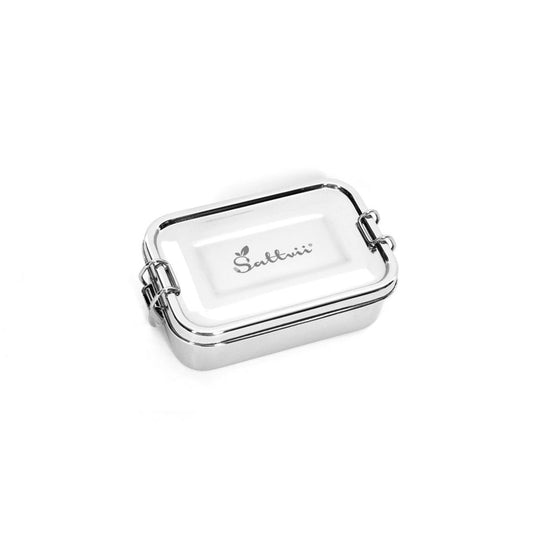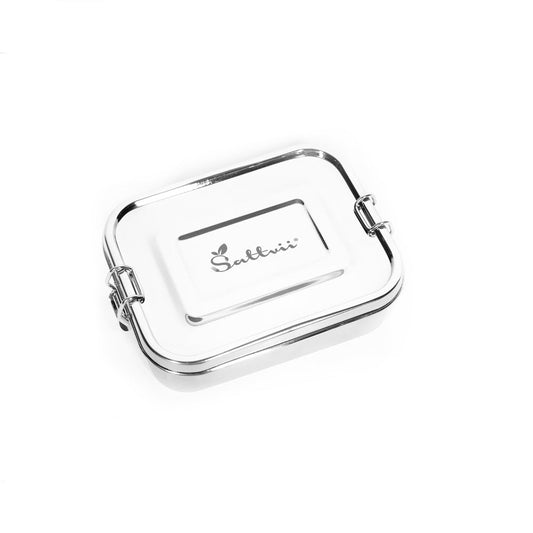
How dangerous is microplastic actually?
shares
Microplastic can now be found everywhere - whether in the Arctic, rivers or even in human feces. But where does microplastic actually come from?
The microscopically small plastic particles can, for example, become detached from your clothes wash and get into the sewage treatment plant via the waste water. Did you know that with each wash, garments lose up to 2,000 plastic fibers that the washing machine can't catch?
Approximately 35 percent of the microplastics in the sea comes from the fiber abrasion of textile washing. This is what a study by the International Union for Conservation of Nature found. Thus, textile fibers are among the microplastic source number one in terms of marine pollution.
Now you already know how microplastics get into the sewage treatment plant - via the wastewater from the washing machine or toilet. Next problem: Via the so-called sewage sludge, the microplastics now come to our fields as fertilizer and so automatically into the floor. And from there it gets through flood into the sea and our rivers.
In Manchester, ten rivers were examined on this subject. Each of them contained microplastics in sediment and soil samples. The researchers were able to identify more than half a million plastic particles per square meter river bed.
Also interesting:
miracle material stainless steel

In investigations on or in the Danube, researchers have been able to determine that sometimes more plastic particles< Drive t4> as fish larvae. According to estimates, the river contained an average of 317 plastic particles and only 275 fish larvae in about 1000 cubic meters of water.
And how is the situation in the countryside? Here the problem is even more serious. Depending on the environment, 4 to 23 times the amount of microplastic was discovered there that is otherwise found in the oceans. This means that microplastics enter nature through industrial use, but also through us as consumers.
Unfortunately, there are still far too many people nowadays who carelessly throw packaging, bags and bottles into the environment. These things are mostly made of plastic and cannot rot: Microplastics are created by this aging and decay process.
Where you can still find microplastics is, for example, in the air. Scientists think that microplastics are in the atmosphere and by precipitation like rain or snow
A study also provides evidence of these assumptions: Researchers at the Alfred-Wegener Institute have now for the first time in
Keyword wind: Microplastic is comparable small and light like dust . Therefore, it can be “taken” by the wind very easily. Microplastics in the form of fibers float particularly well.
Scientists in Spitsbergen collected some of the samples that emerged from the air and found 14400 particles per liter stuck on a ice floe. This value is particularly high and could only be determined in a single sample. All other samples were below 1,000 particles per liter.
Unfortunately, it is not yet possible to say exactly how much plastic can be transmitted through the air. There are other factors at play as well. For example, it also depends on how strong the air currents were when it snowed. The more data, the more precise statements scientists can make.

Where can you find microplastics?
We already find microplastics in a wide variety of products in everyday life: fleece fabrics, for example, are nothing more than polyester fibers - only further developed. The same applies to sponges and cleaning rags - these are also made of plastic fibres. If you scrub your dishes, for example, particles come off, which you then flush down the drain.
In order for liquid detergent to maintain its consistency, plastic particles such as polyethylene are also used here and added to the composition. Polyethylene is cheap and can be used in many ways. For example, you can find it in cosmetic products because it is ideal for binding liquids. You can even find polyethylene in scrubs.
The small particles are perfect as "abrasives" because you can use them to remove old skin cells. Plastic-free alternatives are offered by some suppliers that use sand or coconut shells
Microplastics in the water? Unfortunately yes, because as researchers at the University of Münster were able to find out, microparticles are also found in conventional water bottles. For this purpose, 38 mineral waters were examined and in each of them the researchers found microplastic particles that were smaller than red blood cells.
And what about glass bottles? Most of the particles were found in returnable plastic bottles and in glass bottles - around 300 particles per liter.
According to researcher Darena Schymanski, the residues in disposable PET bottles were even significantly lower. What's behind it? Returnable bottles can be recycled up to 50 times.
If you use these bottles more often, the inside of the bottle may become rough over time and microparticles may be released into the water. You don't have this problem with disposable bottles, as they have a very smooth inner surface and so fewer particles "get stuck".
But what was very surprising was the result of the glass bottles. Here even the researchers were amazed. In the case of glass, the researchers assume that the cleaning of the bottle allows microparticles to get inside.
And what about food? There is little data on the occurrence of microplastics in food. Microparticles could be detected in some fish species, but mainly in the contents of the stomach and intestines, according to the Chemical Investigation Office Munstland-Emscher-Lippe. Fortunately, the fish's contents are removed beforehand. How far this then affects the rest of the fish is still somewhat questionable. In addition, plastic particles could also be detected in salt and mussels.
After these lines, it probably seems to you that microplastics are found everywhere.Fortunately, that's not entirely true. Scientists agree that there are certain things that are free of microplastics: plants, deeper layers of the earth, aquifers and stones. At least something.

Are we ingesting microplastics?
Researchers from the Federal Environment Agency say that we can absorb the smallest plastic particles through bottled water or food and these can accumulate in our tissue.
But it is also important to mention: We have natural mechanisms to block these particles, such as our mucous membranes . These protect us from grains of sand that we could accidentally swallow.
Unfortunately, despite everything, microplastics can accumulate in our bodies and cause inflammation. So far, this claim is only supported by assumptions.
How exactly and if we can absorb microplastics from the air is still very unexplored. The particles in the air are so small that they can hardly be measured and it is assumed that there are much smaller particles that cannot yet be measured with current devices. These particles could get into our lungs through breathing, but what exactly happens then is still unclear.

What contribution do we make from Sattvii?
We at Sattvii run a sustainable and environmentally conscious Corporate philosophy. For us, the customer is king and we do everything we can to help the environment with our lunch boxes. That's why our products are completely plastic-free and last a lifetime. We offer lunch boxes for children, lunch boxes for school and lunch boxes for kindergarten.
Of course you can also enter the world of "meal preps" for work and always have a rich and healthy meal with you. Unsure? Feel free to visit our purchasing advisor!
We hope we were able to give you an insight into the topic of "microplastics" with today's article.
If you still have any questions, please contact us by Mail and we will help you as best we can.





